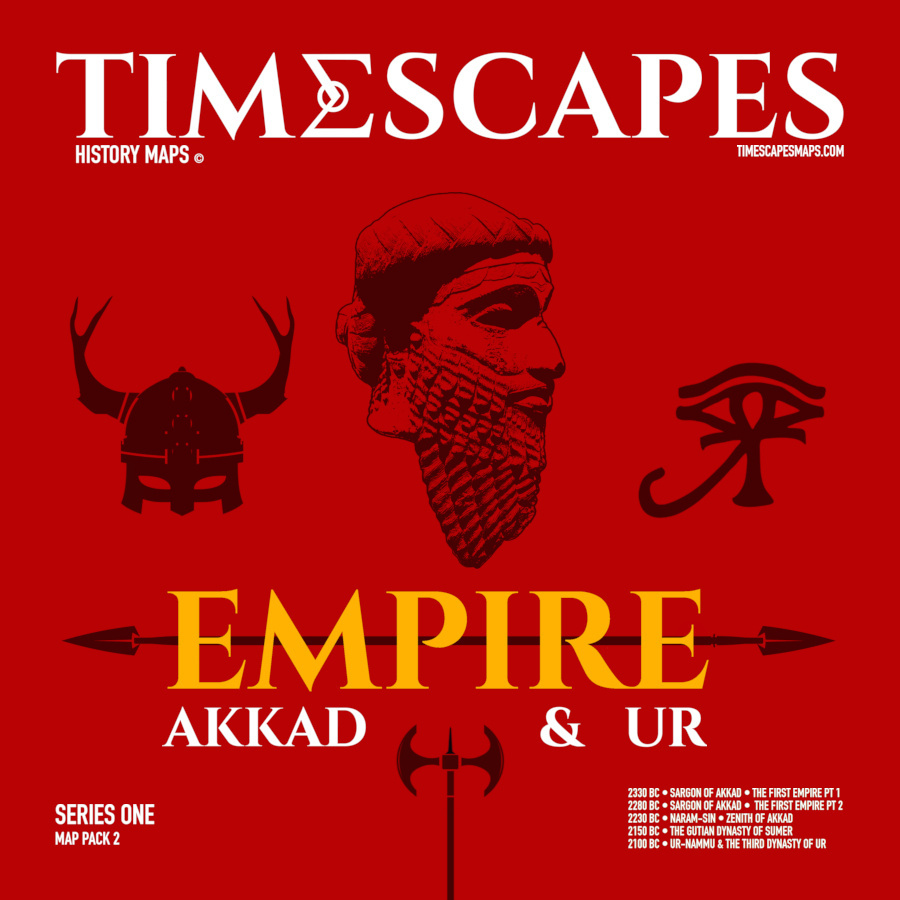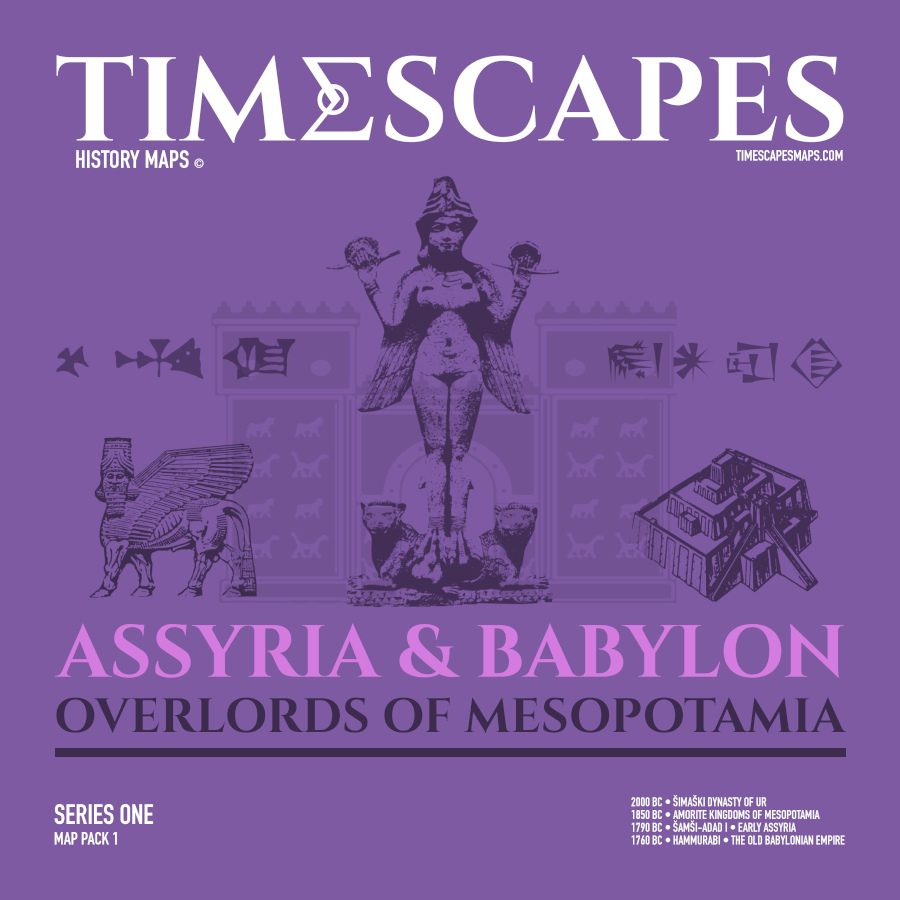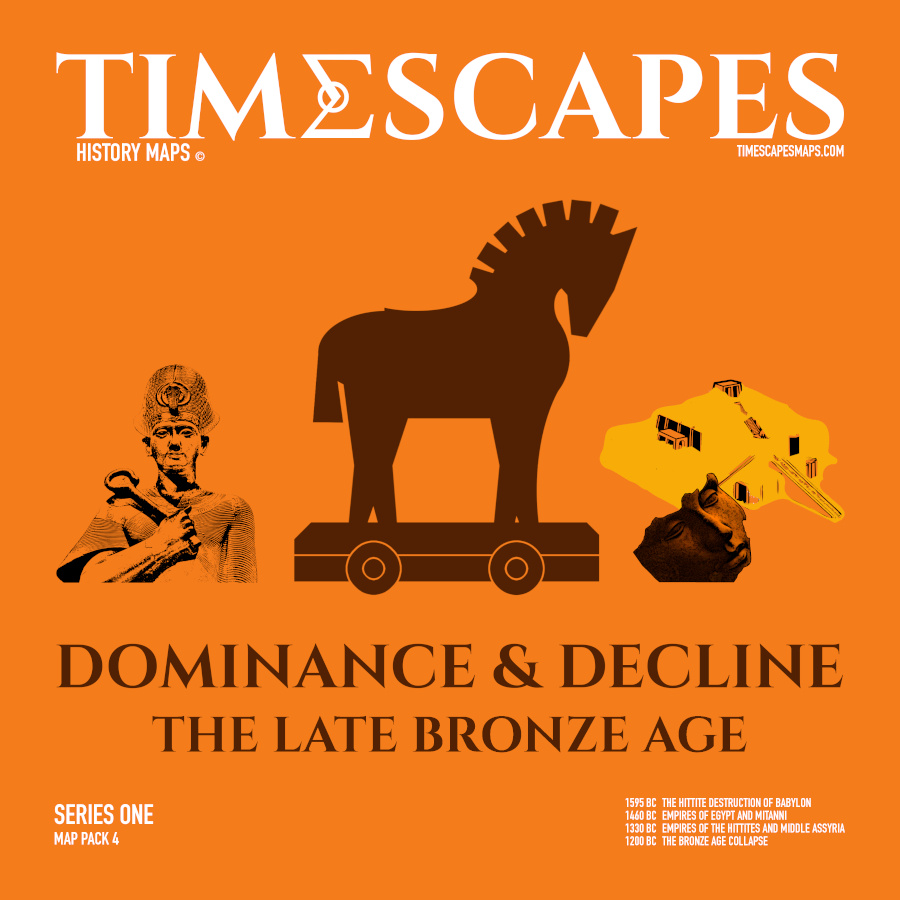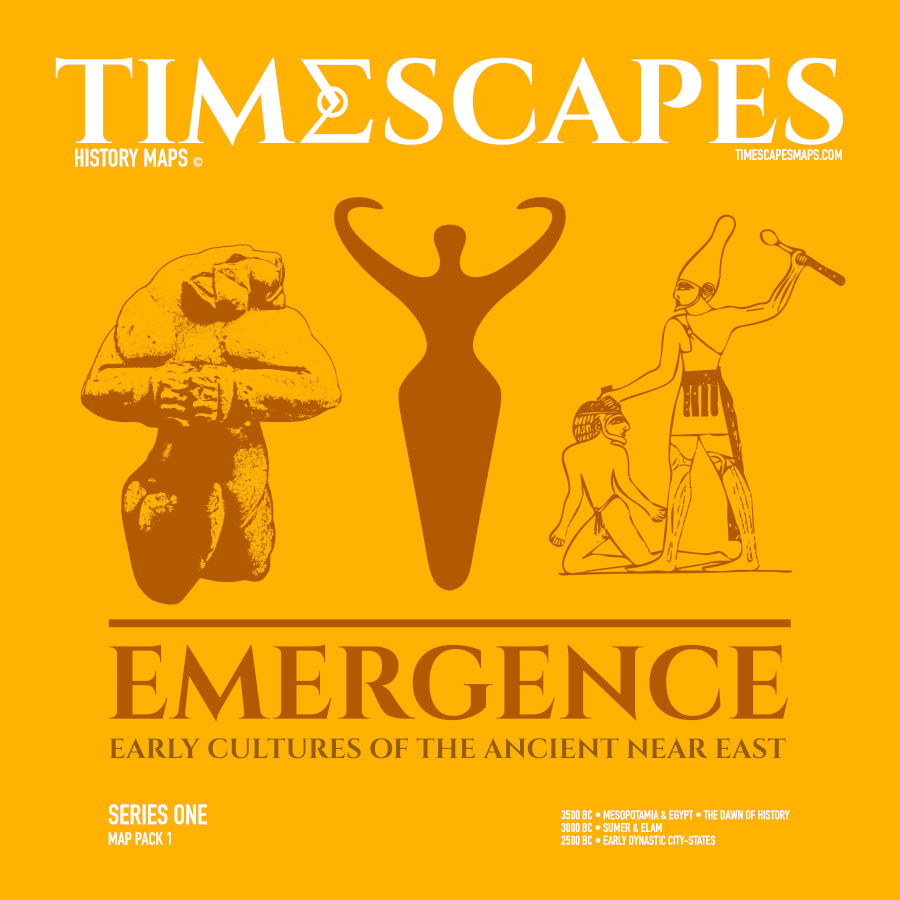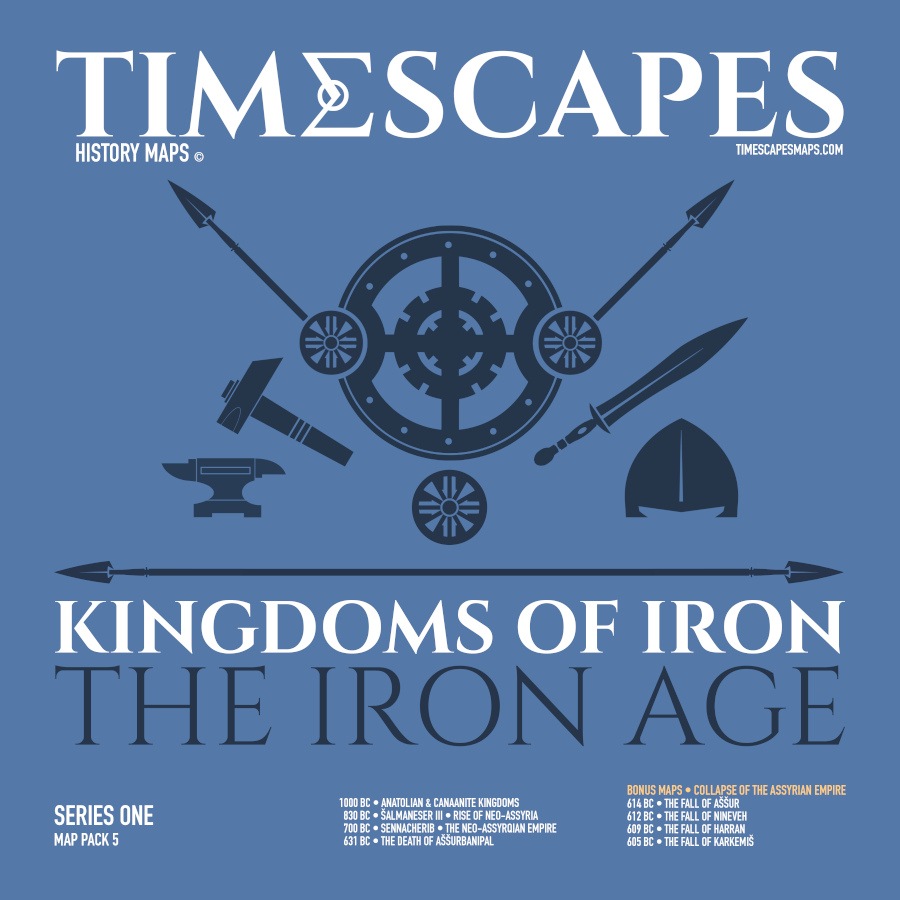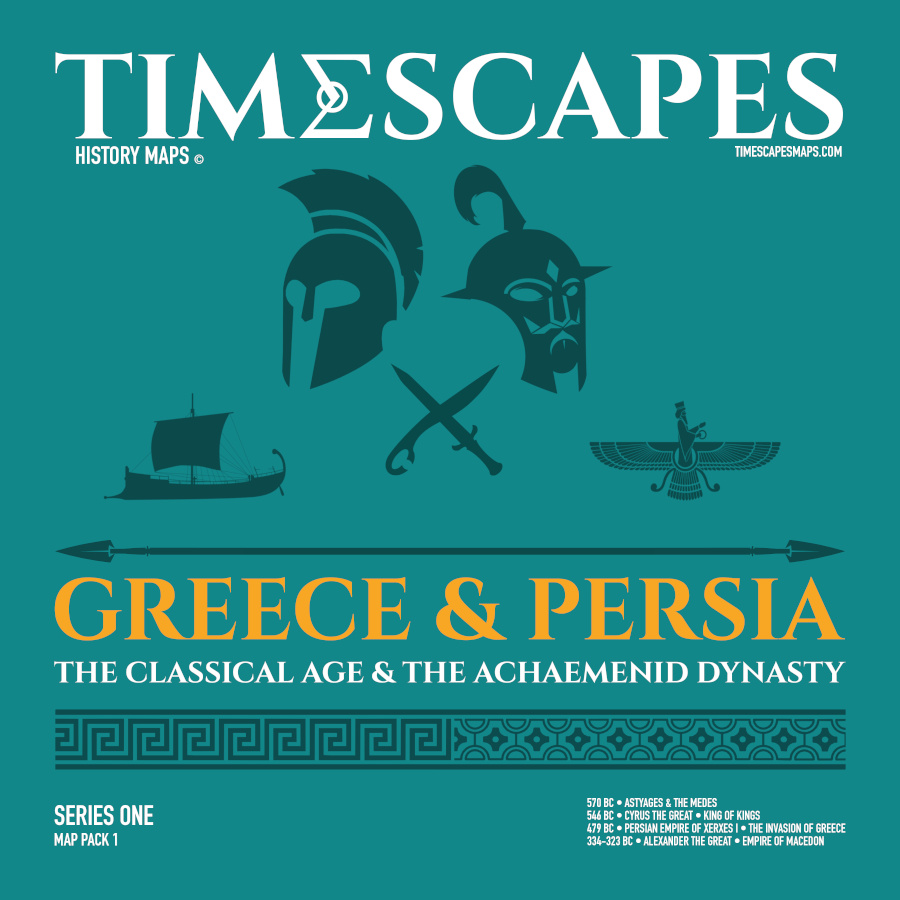About Timescape History Maps
Welcome to Timescapes History Maps: a series of digital historical timeline maps developed for use in Google Earth Pro.
Timescapes History Maps is a colossal project that has taken years of research and construction in order to bring a universe of historical information to your fingertips. And the whole thing fits on a flash-drive smaller than your thumb.
Google Earth Pro is an ideal platform for Timescapes as it uses the common .kml/.kmz file format which can be easily viewed across multiple versions of Google Earth Pro on all platforms.
Google Earth Pro also uses high resolution satellite imagery to render a 3- dimensional map of our earth with which the user is able to interact.
Onboard features, e.g. high-magnification zooming and 3D rotation, allow the user to appreciate in detail the nature of the geographical terrain associated with any given culture, for example the mountain ranges of Anatolia or the deserts of Egypt.
Timescapes Series One covers the ancient Near East and spans the period between the first cities (3500 BC) to the death of Alexander The Great (323 BC) The project currently features around 1500 sites of the ancient Near East, and there are new sites being added as archaeology reveals more of history’s secrets.
The maps serve as a portal to a vast resource of region-specific information online: archaeological data, photo and video links and map overlay data, all of which contribute to a detailed understanding of these early cultures and their progress through history.
Timescapes can be updated at a moment’s notice. Additional sites and information are added as soon as they become available, eventually building into a huge resource for students, historians, scholars, archaeologists, educators and anyone who has a passion for, and sense of wonder about, history.
The maps run on Google Earth Pro (desktop version for Mac and Windows).
By drawing on the huge body of existing archaeological, historical and geographical data, the intent is to build a library of timeline maps and associated information which strive to visually illustrate as accurately as possible the extent and influence of past cultures.
The Territory
For our purposes the designation ‘Near Eastʼ covers the following present-day regions:
The countries which feature consistently:
- Armenia
- Azerbaijan
- Bulgaria
- Crete
- Cyprus
- Egypt
- Georgia
- Greece
- Iran
- Iraq
- Israel
- Jordan
- Kuwait
- Lebanon
- Macedonia
- Palestine
- Syria
- Turkey
The Persian and Macedonian empires:
The following countries are not within my core designation but appear due to the fact that all were partly occupied by two enormous empires belonging to the Near East:
- Afghanistan
- Kyrgystan
- Pakistan
- Tajikistan
- Turkmenistan
- Uzbekistan

Geographical features
Of course the climates of certain areas have changed over the last 5000 years; the courses of some rivers have altered and shorelines have changed – but in the grand scheme of things there have been no major geological upheavals. The fact that certain geographical features like mountain ranges and many ancient roads are largely unchanged enables us to make educated guesses about things like trade routes and boundaries.

Archaeological sites
Obviously, the great majority of archaeological sites from the ancient world are no longer standing and therefore not viewable in a 3-dimensional sense (although their plans are often visible from the aerial perspective).
However, the Google Earth Pro user community has rendered relatively accurate, although basic, 3D models of many of the more well-known ones such as the Pyramids so the viewer is able to gain a sense of scale and situation.

Other views
In addition to the 3D modelled view, Google Earth Pro offers the Street View, a photo-realistic 360-degree option. By enabling this in the Layers section, the user can access many 360-degree views of archaeological sites.

Timeframes of the maps
Timescapes is designed to give the user a broad overview of the progression of cultures through time, by using complex snapshots, as it were, of specific points in time. Each map is designed to illustrate a specific year on the historical timeline. Sometimes the year will be chosen to reflect significant events, e.g. the collapse of a culture or the point at which it reached its greatest extent. Other years may be chosen to represent the general composition of the Near East.

Creating the maps
If you were creating 20th century maps covering the time period of, say, Germany between the wars, it would be relatively easy to achieve a high degree of accuracy due to the fact that the period in question is very well documented statistically, geographically and historically. The same is not true of the ancient world: the absence of information means that much of the data in maps of the ancient past is necessarily conjecture. That data is, however, the result of years of intensive research based on the currently available archaeological and historical record.
Accuracy
The Timescapes project will always strive for optimum accuracy based on the historical sources and will evolve and refine the maps over time as new data becomes available. Arrangement of ancient boundaries will always be speculative however and no apologies are made for that. As always, Timescapes welcomes all constructive and informed contributions to the project.
There is quite a lot of information available for certain periods: for the Neo-Assyrian period, for example, a relatively accurate picture can be obtained from their many inscriptions; for other periods/ cultures, (e.g. the culture of Iron Age Luristan, which has left many fine art objects but few written records), the extent of culture or settlement may not be currently possible to determine with certainty. As always, new information is contingent on new discoveries in the fields of history and archaeology.
Google Earth Pro
Google Earth Pro is an ideal platform for Timescapes as it uses the common .kml/.kmz file format which can be easily viewed across multiple versions of Google Earth Pro on all platforms.
Google Earth Pro uses high resolution satellite imagery to render a 3-dimensional map of our earth with which the user is able to interact.
Onboard features, e.g. high-magnification zooming and 3D rotation, allow the user to appreciate in detail the nature of the geographical terrain associated with any given culture, for example the mountain ranges of Anatolia or the deserts of Egypt.
-
Timescapes Map Pack 2 - Empire: Akkad and Ur
£14.99 -
Timescapes Map Pack 3 - Assyria and Babylon Overlords Of Mesopotamia
£14.99 -
Timescapes Map Pack 4 - Dominance and Decline - The Late Bronze Age
£14.99 -
Timescapes Map Pack 1 - Emergence: Early Cultures of the Ancient Near East
£9.99 -
Timescapes Map Pack 5 - Kingdoms of Iron - The Iron Age
£19.99 -
Timescapes Map Pack 6 - Greece and Persia - The Classical Age
£19.99

